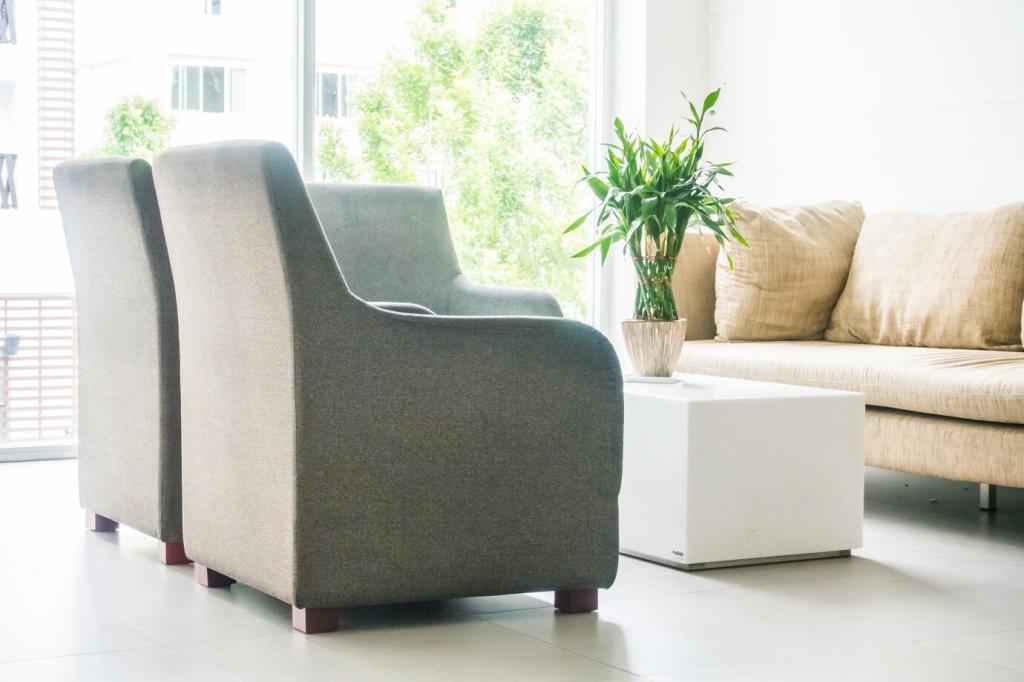
Recycled and Upcycled Materials in Furniture Craft
The conscious integration of recycled and upcycled materials into furniture craft is redefining how designers, artisans, and consumers view the objects within their spaces. This progressive approach not only reduces environmental impact but also inspires creativity, turning discarded or surplus materials into functional pieces of art. Exploring recycled and upcycled furniture reveals stories of innovation and responsibility, where sustainability and style unite seamlessly. The journey through this craft celebrates the beauty of resourcefulness, pushes aesthetic boundaries, and signals a shift toward a circular economy in the world of furniture design.
Sustainable Innovation in Furniture Design
The Rise of Eco-Conscious Materials
The emergence of eco-conscious materials in furniture design has created a platform for rethinking the origins and life cycles of our furnishings. Rather than relying on virgin resources, manufacturers now utilize reclaimed woods, recycled metals, plastics, and fibers destined for landfill. This shift not only diverts waste from the environment but also reduces the carbon footprint associated with furniture production. Each piece crafted from recycled content tells a story of transformation, demonstrating that innovative design can merge seamlessly with ethics. As more consumers seek sustainable options, the demand for pieces made with recycled materials grows, fostering ongoing investment in research and development that brings ever more sophisticated and attractive materials to market.
Closing the Loop: Circular Design Principles
Circular design principles guide furniture makers toward creating products that have an extended life and minimized environmental burden. In practice, this means designing for disassembly, using components that can be reused, or materials that can be reprocessed multiple times. When furniture is created with its next incarnation in mind, the result is a significant reduction in waste and resource depletion. This approach fundamentally alters the traditional take-make-dispose model by closing resource loops. Sustainability is not treated as an afterthought but is integral to every stage, from initial concept to eventual disposal or upcycling. As these principles gain traction, both large and small-scale producers are finding that circular design leads to ongoing innovation and economic efficiency.
Collaboration Between Designers and Waste Streams
Furniture crafted from recycled and upcycled materials often emerges from unique partnerships between designers and organizations handling waste streams. By collaborating with recyclers, salvage yards, demolition contractors, and even local communities, designers gain access to a diverse array of materials that would otherwise be discarded. These collaborations fuel innovation—transforming seemingly ordinary debris into extraordinary furniture. This synergy not only elevates the quality and uniqueness of the end products but also highlights the importance of shared responsibility in waste reduction. Ultimately, such alliances strengthen the connection between craft, industry, and sustainable development.

Embracing Material Imperfection
Recycled and upcycled furniture design champions material imperfection, celebrating the scratches, dents, and variations that come with objects that have lived previous lives. These traces of history inject character and soul into the finished products, offering depth rarely found in brand-new materials. Designers learn to work with imperfections rather than hiding them, turning flaws into features that enhance visual interest. This approach challenges conventional standards of perfection and invites users to appreciate the intrinsic beauty that comes from authenticity and resilience. Each piece thus becomes both a practical object and a testament to creative adaptability.

Fusion of Old and New Techniques
Integrating upcycled materials with contemporary or traditional furniture-making methods creates a powerful interplay between past and present. Designers may blend time-honored craftsmanship with cutting-edge processes, enabling them to coax the best performance and aesthetic from unconventional components. This fusion not only strengthens the structure and durability of the furniture but also enables endless creative experimentation. The results are pieces that are not only visually arresting but also rich in symbolic value, serving as bridges between generations and design histories. This melding of techniques underscores the transformative possibilities inherent in upcycling, establishing new narratives for materials and makers alike.
Environmental Impact and Responsible Consumption
A primary benefit of utilizing recycled and upcycled materials in furniture is the significant reduction in waste sent to landfill and the decreased demand for raw resource extraction. Each piece made from discarded wood, metal, or fabric serves as an act of environmental stewardship, extending the life of finite materials. This process slows the depletion of forests, mines, and other natural resources, making the craft a key player in broader conservation efforts. Moreover, reprocessing waste materials often consumes less energy and water than producing new ones, further diminishing the overall environmental cost associated with furnishing our lives.
Furniture crafted from recycled and upcycled content encourages consumers to make more thoughtful purchasing decisions. When the origins and transformation of materials are transparent, shoppers tend to appreciate the value embedded in each piece beyond mere aesthetics. This growing awareness inspires a culture shift away from disposable, short-lived furniture toward objects built for longevity and repair. The result is a more minimalist, curated approach to interiors, where every item is chosen for its story, durability, and reduced impact. As consumers demand greater accountability from brands, mindful consumption becomes a driving force for positive change throughout the industry.
Certification schemes and improved traceability are becoming increasingly important in verifying the environmental bona fides of recycled and upcycled furniture. By adopting standards and labels that track the origin and processing of materials, manufacturers provide consumers with deeper insights into the ecological footprint of their purchases. Transparent documentation reassures shoppers that products meet defined ethical and environmental criteria, building trust and loyalty. This emphasis on accountability also encourages suppliers and producers to continually improve their sourcing and production practices, helping to raise industry-wide standards and drive competition toward greater sustainability.

